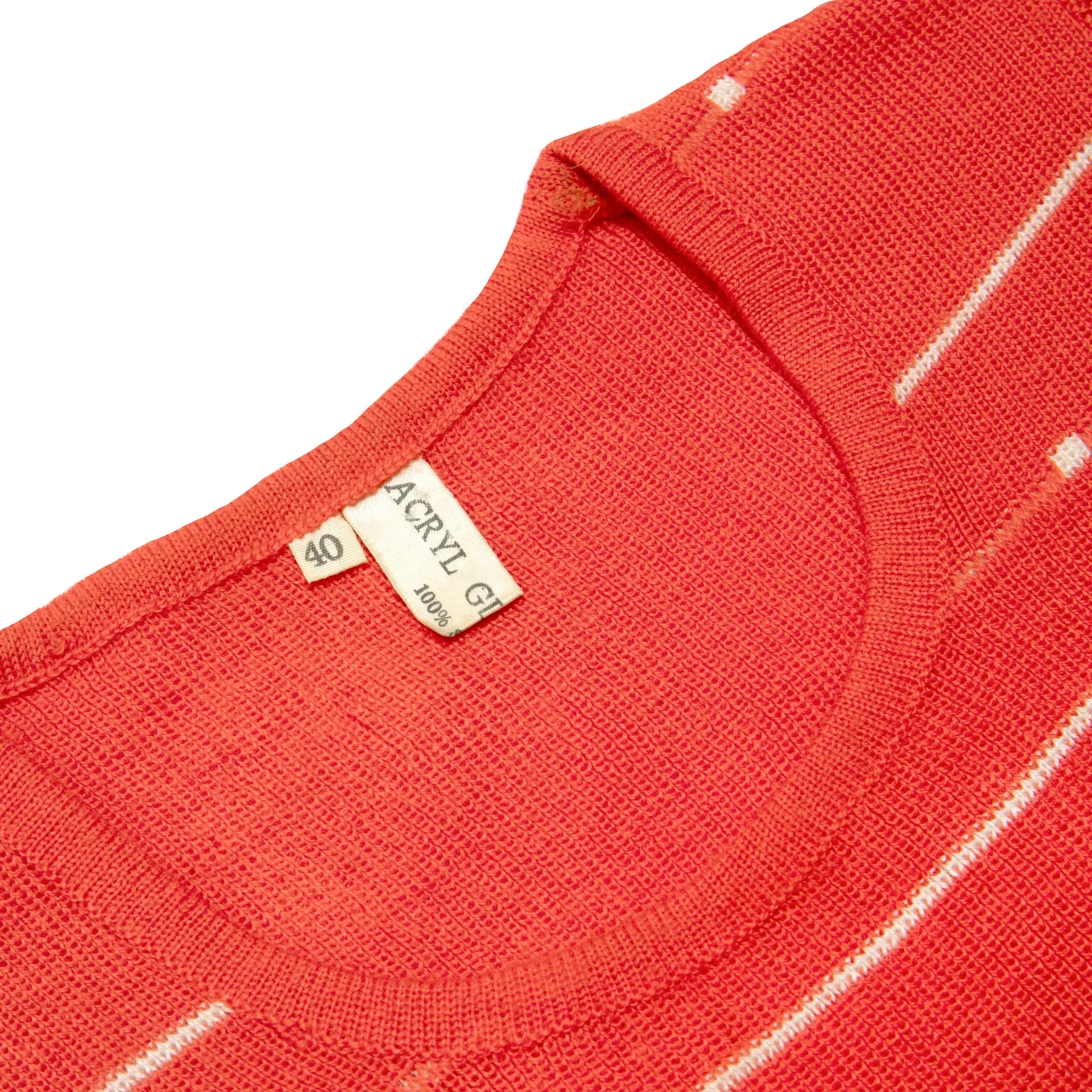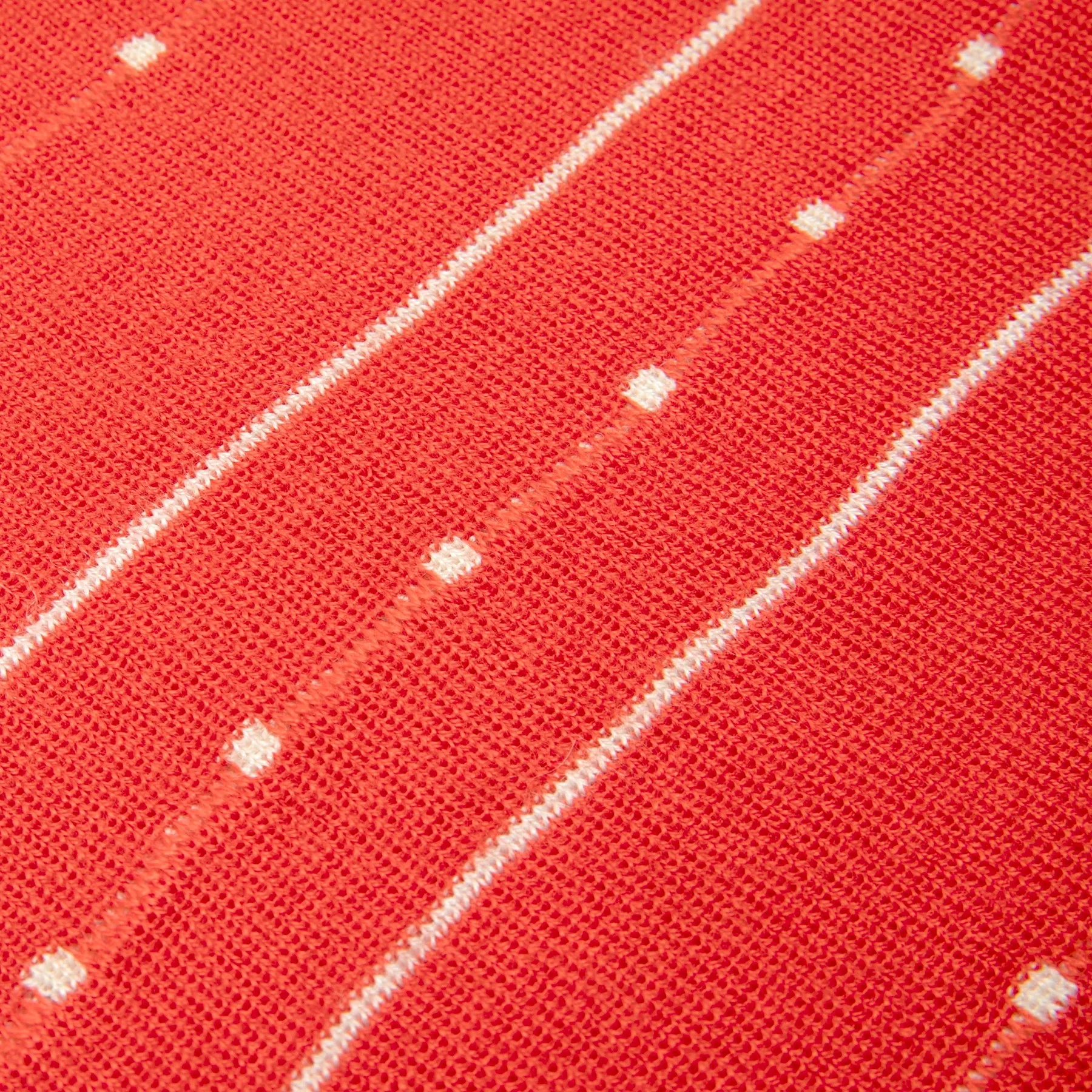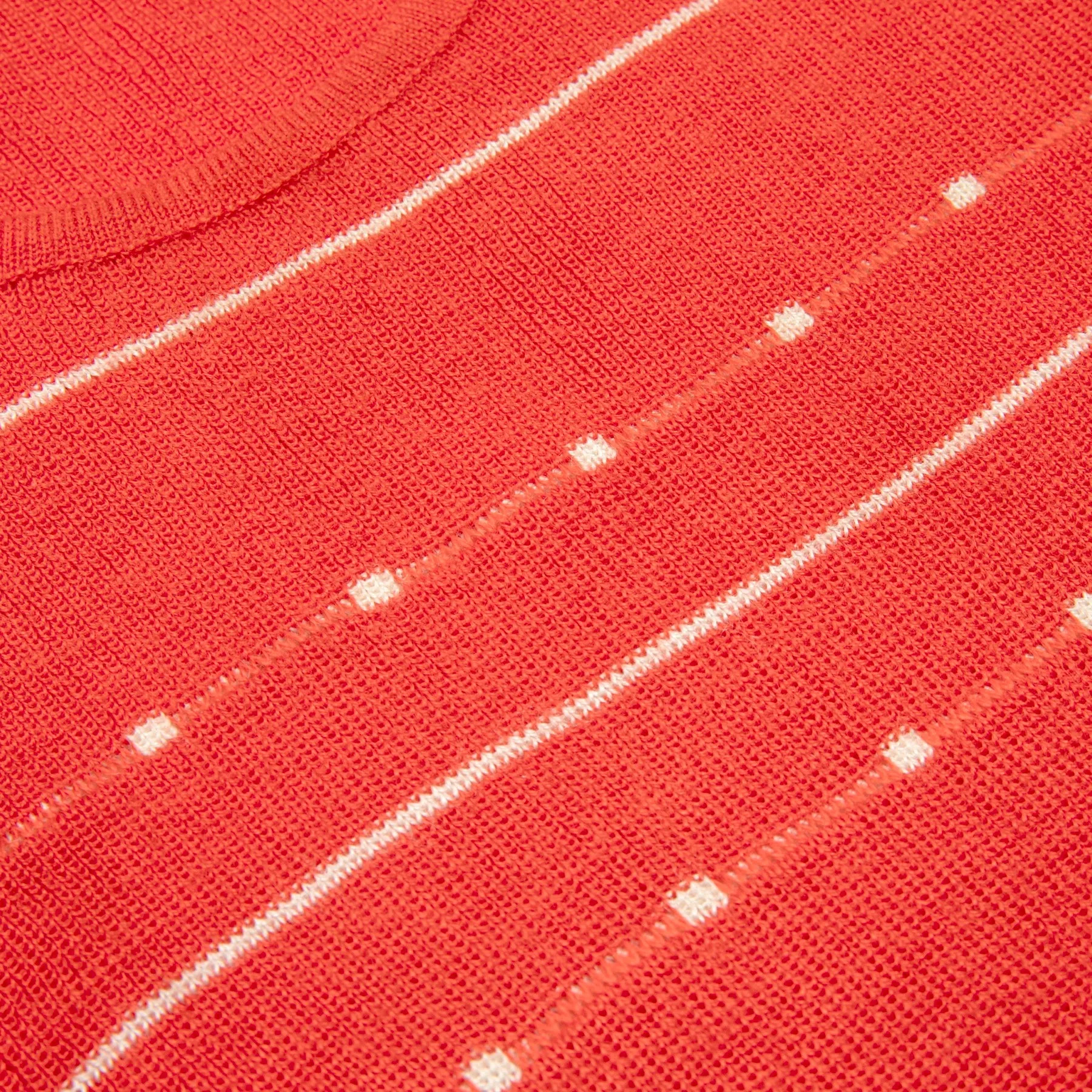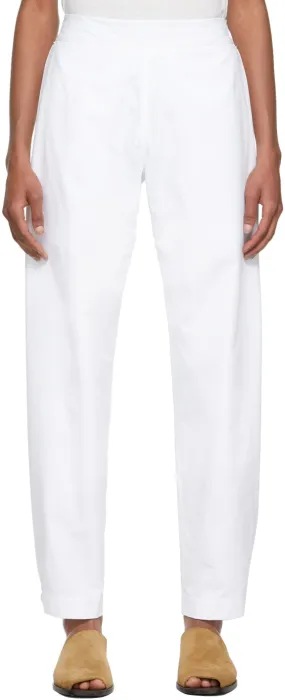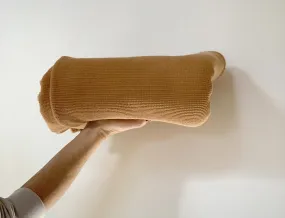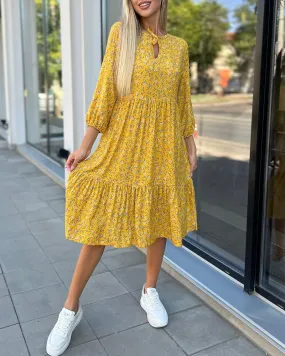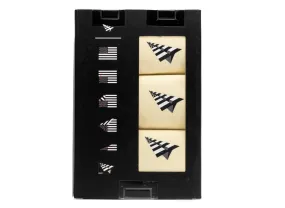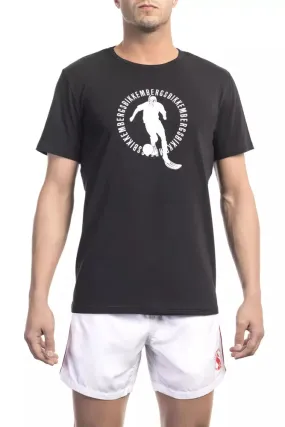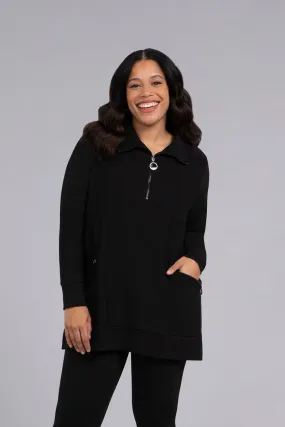Tuck-stitched white dots and linear floats ripple across a coral ground—graphic restraint rendered in fine-gauge acrylic and full-fashion shaping.
Unmarked yet undeniably precise in execution, this women’s short-sleeve knit pullover bears all the hallmarks of a late-1970s to early-1980s European garment—likely originating from West Germany or Austria. Identified only by its utilitarian fiber label, which reads “100% acrylic” and “size 40,” the garment exemplifies the democratization of synthetic knitwear during the post-war decades, when the textile industry rapidly shifted from natural fibers toward mass-produced acrylics. At once practical and subtly elegant, it occupies a transitional space in women’s leisurewear, designed for increased mobility and casual public presence without compromising visual sophistication. A direct descendant of the shell top—an indispensable layering garment in post-war women’s wardrobes—it reinterprets the silhouette through the lens of 1970s textile innovation, marrying fine-gauge synthetics with minimalist design intent. Constructed via flatbed weft knitting using a single-bed jersey base, the pullover showcases a fine-gauge structure—likely between 16 and 20 gauge—with a GSM hovering around 140–180, achieving an exceptionally breathable and lightweight hand. The open-knit texture, produced by a controlled loose stitch density, retains stability despite the inherent curl-prone behavior of acrylic yarns. Shaping is embedded within the knit itself through stitch-count modulation, eliminating the need for darts or panel seaming, and ensuring the sheer structure maintains form without visual distortion. The set-in sleeves taper subtly toward hemmed edges, while the body contours lightly through reduced stitch counts at the waist. This method of internal shaping guarantees a natural cling that flatters the figure and supports the garment’s role as either a standalone piece or a layering element under jackets and blouses. The visual focal point—a dot-and-line motif in white yarn against a coral ground—demonstrates advanced jacquard programming and needle selection. The alternating horizontal stripes and dots are integrated during knitting using float stitch or tuck-stitch techniques, precisely calibrated to create a consistent repeat pattern. These motifs are not embroidered or appliquéd post-knit; instead, they are seamlessly embedded into the base fabric, showcasing machine-guided yarn inlay or plated stitchwork. The white lines are created by a contrast yarn fed at selected stitch courses, while the periodic dots interrupt these lines through programmed float stitches anchored by tuck loops to prevent snagging. The result is a rhythmically textured, optically light surface that plays with tactility and dimensionality without compromising the garment’s clean silhouette. Neckline finishing is executed with a narrow tubular trim, likely linked manually or with a loop-to-loop machine to ensure minimal bulk and optimal edge recovery—essential for garments designed to cling lightly to the upper body. The round scoop neckline is mirrored at the back, minimizing complexity at the shoulder join and maintaining continuity in silhouette. The sleeves and hem avoid traditional cuffing or banding; instead, they terminate in clean, full-fashioned edges with subtle roll or curl, a natural consequence of unweighted fine-gauge jersey. Serged seams—likely single-needle safety stitches—join the panels at the sides and underarms, providing flexible, low-bulk connections that preserve drape integrity and prevent puckering. The garment’s structural assembly, based on flat-knit bodice and sleeve panels, is executed with high efficiency and minimal surface disruption. From a technical standpoint, the knit is a plain jersey structure, smooth on the face with subtle reverse looping. Tension consistency across the garment is exceptional, reflecting meticulous machine calibration. The linking at the neckline is crisp, and the seams show no evidence of laddering or stress imbalance—key indicators of skilled production. Pattern alignment is precise, ensuring horizontal motifs remain undistorted across the bust and waist, even under slight tension from wear. The yarn’s composition—marked “Acryl-Ganazgarn,” a synthetic blend typical of mid-century European mills—exhibits the lightweight resilience, wool-mimicking texture, and slightly matte, fuzzy halo associated with ring-spun or open-end acrylics. Its thermoplastic nature guarantees shape retention, while the fine denier enhances stitch clarity and breathability. Stylistically, the garment echoes the postmodern minimalism that emerged in the wake of the mod knitwear boom of the 1960s, now recontextualized through the graphic economy of Bauhaus textile sensibilities. The repeated dot motif against linear white stripes evokes musical notation or minimalist braille—subtly gestural, yet restrained—imbuing the garment with a quiet poetics that transcends pure function. The coral base color, positioned between emotional warmth and visual discretion, further enhances its psychological resonance: refined but unflashy, expressive yet contained. Within a broader historical context, the piece sits squarely at the confluence of technological innovation and shifting cultural codes. The late 1970s marked the height of synthetic yarn experimentation, and this garment reflects both the precision of contemporary machine knitting and the desire to embed modernist design into everyday women’s wear. The choice of acrylic—valued for washability, moth resistance, and its scalable mimicry of natural fibers—was both practical and emblematic of a period that prized convenience without abandoning aesthetics. Garments of this type proliferated in European fashion markets during the rise of high-volume knit production, serving an emerging class of style-conscious, mobile women. Today, this pullover holds renewed relevance. In an era where designers like Jil Sander, Marine Serre, and Prada revisit the codes of 1970s leisurewear, its optical lightness and refined transparency feel prescient. The garment’s archival value lies in its precise balance of softness and structure, modesty and sensuality, technical complexity and stylistic clarity. As vintage, it provides not just an artifact of textile evolution but a viable template for reissue—ideal for spring/summer capsule collections, editorial styling rooted in retro minimalism, or contemporary reinterpretations of mid-century modernism. Though originally a commercial piece, its patterning, construction, and conceptual subtlety elevate it beyond its market tier, offering a masterclass in engineered simplicity.
Measurements (cm)
Chest: 29
Length: 50
Shoulder: 28
Sleeve: 21
Size Conversion (approximate, with stretch considered)
US Women’s Size: XS-S
EU Women’s Size: 32-34
SKU: 004026





